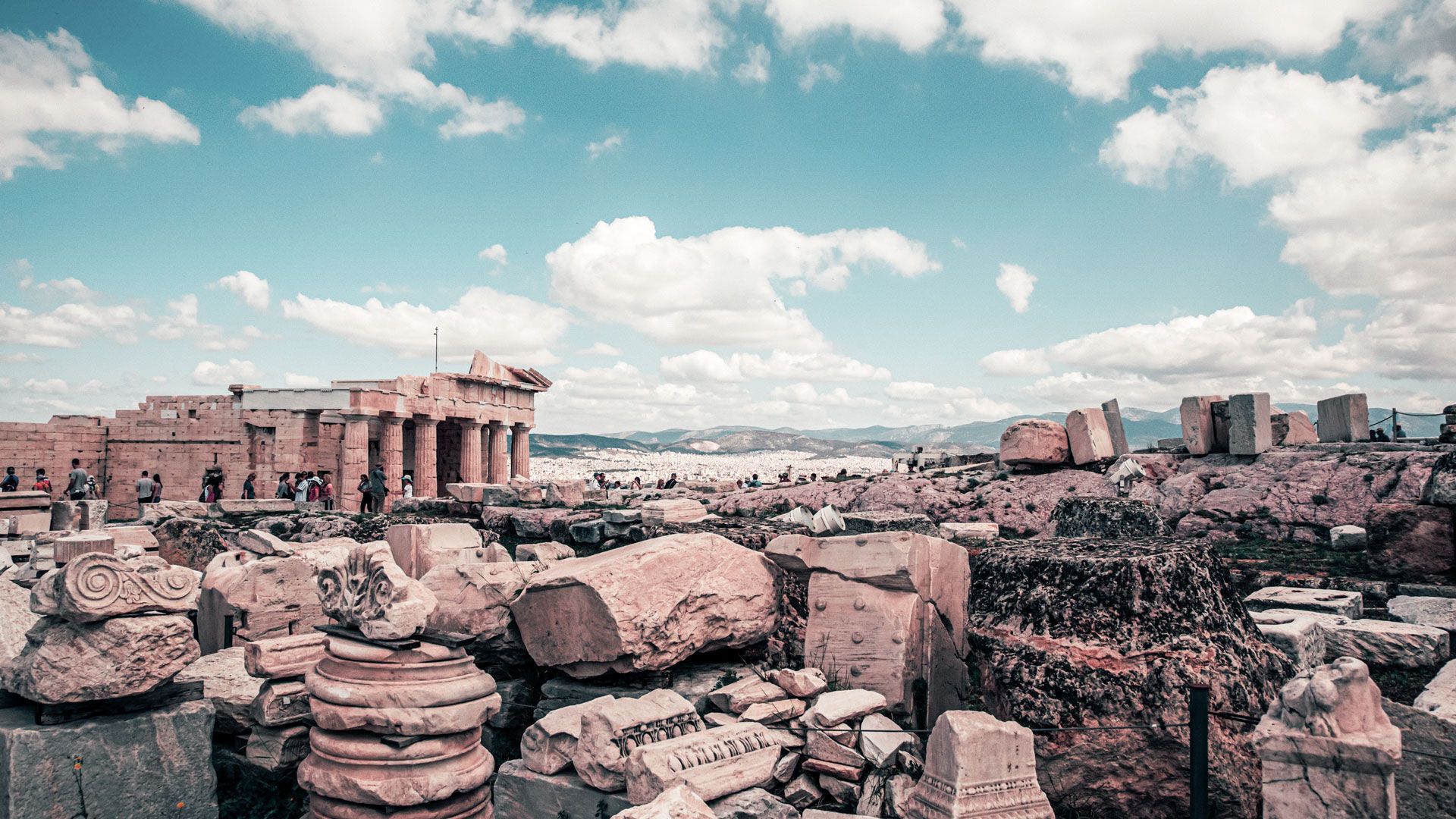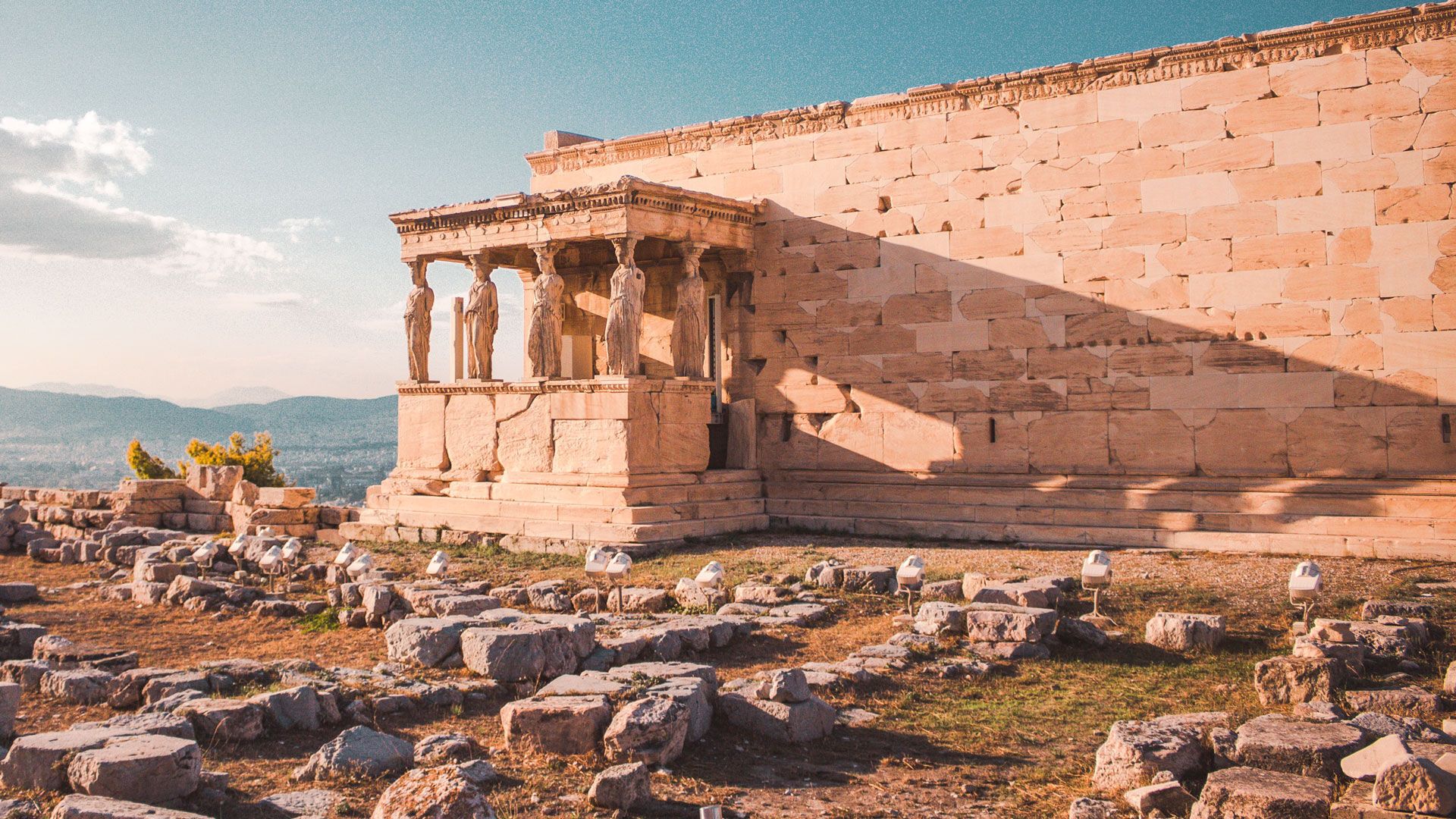Take a tour of the Acropolis of Athens and discover why one of the greatest cultural landmarks of world history continues to emit a special energy over the city it has inspired for more than 2,500 years

Anytime you catch sight of it in Athens, the Acropolis steals every bit of your attention. And for good reason because it continues to bear witness to an ever-changing city that was named after the goddess to whom its most famous temple was dedicated.
What we admire today (together with the artefacts in the neighbouring Acropolis Museum) is the work of the greatest craftsmen and engineers of Classical times. Just look at the detail of the Parthenon (dedicated to the goddess Athena and without doubt the most recognised ancient Greek structure), the Erechtheion with its majestic female Caryatids holding up the porch) and the intricately designed Temple of Athena Nike. All are astonishing. But that’s only the start of what the Acropolis stands ready to reveal.
A natural hilltop fortress for the city of Athens’ first inhabitants, a place for worshipping the ancient gods, the centrepiece of the glorious 5th century BC reconstruction project of Pericles as Athens enjoyed its Golden Age… whichever era of Athens’ history you focus on, this was the city’s undisputed focal point. Civilisations and conquerors have come and gone, sometimes adding to what Athenians today call the Sacred Rock and sometimes destroying its monuments. And there it still stands, shining as brightly as ever.
It’s not surprising that the most famous acropolis in Greece has been a UNESCO World Heritage Site since 1987 and is an enduring symbol of the culture that Greek antiquity gave to the world. But from up close, you’ll also see that it is a masterpiece of architecture and artistry. Are you ready for a closer look?

The Roman-era doorway, named after the 19th-century archaeologist who discovered it, is your introduction to the Acropolis. It was a late addition in the history of the Acropolis, originally linked to the Propylaea by a broad marble staircase around the 3rd century AD in an attempt to protect the site.
A tall, rectangular marble plinth built in the second century BC just beyond the Beulé Gate. It is named after Marcus Agrippa, son-in-law of Augustus, because a bronze representation of his four-horse chariot was once mounted on the base.
This is where things heat up. The Propylaea is a grand stairway complex (containing five gateways, with Ionian and Doric columns flanking it) that lead up to the Parthenon and other iconic monuments of the Acropolis.
On your way up Acropolis Hill, take a moment to cherish this temple, one of the best-preserved monuments of Classical times. It stands to the side of the Propylaea and is dedicated to the Goddesses Athena Nike (the personification of victory). Its beauty and grace demonstrate the pinnacle of ancient Greek craftsmanship.
A temple dedicated to both Athena and Poseidon. Built at the same time as the Parthenon, it is perhaps most famous for the Caryatids that held up its porch with their heads. The caryatids you see are exact copies, with the originals safely on display in the Acropolis Museum.
And there she is, standing proudly at the top of the Sacred Rock… the Athenian landmark and best-known temple of the ancient world, built in the middle of the 5th century BC. There are many ways to view the Parthenon: as an architectural wonder, with columns of subtly changing width that don’t just offer strength but also the optical illusion of straightness; as a shrine to the Goddess of Wisdom and Warfare and the Guardian of Athens; and as the place every invader of Athens wanted to claim or destroy. It was the Venetians, in the 17th century, who landed the direct hit that blew up the ammunition cache of the Ottomans, resulting in the damaged ruin of today. Yet still, the Acropolis maintains the dignity and grace of a building that proudly represents the city of Athens and culture to a worldwide audience.
South of the Erechtheion, this early 6th-century BC monument was built within the precincts of the Mycenaean royal palace of the 14th century BC.
One of the last ancient additions to the Acropolis Hill (around 1st century BC), this small circular temple (or what remains of it) is thought to have held a statue of Augustus and the deified Rome.
Introduced to the Acropolis in the 6th-century BC, this sanctuary was dedicated to the goddess protecting expectant mothers and women in confinement.
Found along the south wall, the Chalkotheke (“bronze store” in Greek) housed metal votive offerings – weapons, statuettes and other objects, dedicated to the Acropolis.